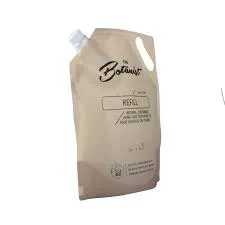- Afrikaans
- Albanian
- Amharic
- Arabic
- Armenian
- Azerbaijani
- Basque
- Belarusian
- Bengali
- Bosnian
- Bulgarian
- Catalan
- Cebuano
- chinese_simplified
- chinese_traditional
- Corsican
- Croatian
- Czech
- Danish
- Dutch
- English
- Esperanto
- Estonian
- Finnish
- French
- Frisian
- Galician
- Georgian
- German
- Greek
- Gujarati
- haitian_creole
- hausa
- hawaiian
- Hebrew
- Hindi
- Miao
- Hungarian
- Icelandic
- igbo
- Indonesian
- irish
- Italian
- Japanese
- Javanese
- Kannada
- kazakh
- Khmer
- Rwandese
- Korean
- Kurdish
- Kyrgyz
- Lao
- Latin
- Latvian
- Lithuanian
- Luxembourgish
- Macedonian
- Malgashi
- Malay
- Malayalam
- Maltese
- Maori
- Marathi
- Mongolian
- Myanmar
- Nepali
- Norwegian
- Norwegian
- Occitan
- Pashto
- Persian
- Polish
- Portuguese
- Punjabi
- Romanian
- Russian
- Samoan
- scottish-gaelic
- Serbian
- Sesotho
- Shona
- Sindhi
- Sinhala
- Slovak
- Slovenian
- Somali
- Spanish
- Sundanese
- Swahili
- Swedish
- Tagalog
- Tajik
- Tamil
- Tatar
- Telugu
- Thai
- Turkish
- Turkmen
- Ukrainian
- Urdu
- Uighur
- Uzbek
- Vietnamese
- Welsh
- Bantu
- Yiddish
- Yoruba
- Zulu
graphic design in packaging
The Role of Graphic Design in Packaging A Comprehensive Overview
Graphic design in packaging is a crucial aspect of marketing that brings together art and functionality to create visually appealing and practical packaging solutions. In today's competitive marketplace, effective packaging design can be the difference between a product's success and its failure. This article explores the importance of graphic design in packaging, the elements involved, and the emerging trends shaping the future of packaging design.
Importance of Graphic Design in Packaging
Packaging serves several purposes it protects the product, provides information, and entices consumers to make a purchase. Graphic design plays a vital role in each of these aspects. First and foremost, the visual appeal of packaging can attract potential buyers. With consumers often faced with countless choices in stores, a well-designed package can catch the eye and communicate the brand’s personality. Vibrant colors, unique shapes, and engaging typography are just a few techniques designers use to draw attention.
Moreover, packaging is a first touchpoint between the consumer and the brand. It conveys the brand's identity and values through design elements such as logos, color palettes, and imagery. Effective packaging aligns with the brand’s overall aesthetic, fostering brand recognition and loyalty. When consumers see consistent and appealing packaging design across different products, it enhances their trust in the brand.
Additionally, packaging must be functional. It should protect the product from damage, be easy to handle, and provide necessary information such as usage instructions and nutritional information. Graphic design helps achieve this balance by integrating necessary text and symbols into the design without compromising on aesthetics.
Key Elements of Packaging Design
Several elements contribute to effective packaging design, and understanding these is essential for any designer
.1. Color Color evokes emotions and influences consumer behavior. For example, blue often conveys trust and reliability, while red can create a sense of urgency. Designers must carefully choose colors that reflect the brand's personality while also appealing to the target audience.
2. Typography The choice of fonts can significantly impact the design's readability and overall appeal. Typography should be chosen based on the product’s personality. For instance, a luxury product may benefit from elegant, serif fonts, whereas a playful children's product might use fun, bold fonts.
graphic design in packaging

3. Imagery Images can tell a story or convey significant information about the product. Whether using photographs, illustrations, or patterns, visual elements should complement the text and enhance the overall design without overwhelming it.
4. Structure and Shape The physical shape and structure of packaging can influence purchasing decisions. Unique shapes can stand out on the shelf, while practical designs enhance usability. Designers often explore innovative packaging structures that not only protect the product but also provide a memorable unboxing experience.
5. Sustainability As consumer awareness of environmental issues rises, sustainable packaging has become a critical element of graphic design. Designers are increasingly exploring eco-friendly materials and designs that reduce waste, focusing on the use of recyclable, biodegradable, or reusable materials.
Emerging Trends in Packaging Design
The landscape of packaging design is continually evolving, with new trends emerging to meet the changing preferences of consumers.
1. Minimalist Design In a world saturated with information, minimalist packaging has gained popularity. Simple designs with clean lines and limited color palettes can convey sophistication and elegance.
2. Interactive Packaging Increasingly, brands are incorporating interactive elements into their packaging. This can include QR codes that lead to online content, augmented reality features, or even designs that encourage consumer participation.
3. Personalization Customizable packaging that allows consumers to feel a connection to the product is on the rise. Brands are creating packaging that can be tailored to individual preferences, enhancing the overall consumer experience.
4. Bold Typography and Graphics To stand out, more brands are using bold typography and graphic elements that make a statement. This trend focuses on creating a strong visual hierarchy that captures consumers' attention quickly.
In conclusion, graphic design in packaging is far more than aesthetic appeal; it is a strategic tool that enhances brand identity, provides essential information, and influences purchasing behavior. As consumer expectations evolve and technology advances, packaging design will continue to innovate, making it an ever-more critical component of brand strategy and marketing efforts. Whether through sustainability, interactivity, or cutting-edge visuals, the future of packaging design promises to be as exciting as it is essential.













